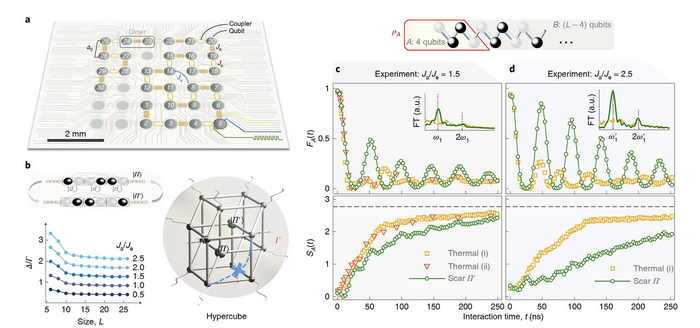Researchers from Arizona State University and Zhejiang University in China, led by Professor Ying-Cheng Lai, along with two theorists from the United Kingdom, have demonstrated for the first time in a programmable, solid-state superconducting processor that large numbers of qubits can be tuned to interact with each other while maintaining coherence for an unprecedentedly long time. The results were published in Nature Physics on October 13, 2022.
“In quantum information science and technology, it is often necessary to assemble a large number of fundamental information-processing units – qubits – together,” “For applications such as quantum computing, maintaining a high degree of coherence or quantum entanglement among the qubits is essential.
Ying-Cheng Lai
Quantum many-body scarring (QMBS) is a newly found form of weak ergodicity breaking in strongly interacting quantum systems with the potential to minimize thermalization-induced decoherence in quantum information processing applications. However, current experimental QMBS realizations are based on systems with unique kinetic constraints.
As contained in the paper, the researchers have discovered a new type of QMBS by decoupling a portion of the many-body Hilbert space in the computational basis. By reconstructing the full quantum state on quantum state tomography through four-qubit subsystems, they demonstrate QMBS states by measuring qubit population dynamics, quantum fidelity, and entanglement entropy after a quench from initial unentangled states. Before now, such a feat was only possible in Rydberg atom systems.
“However, the inevitable interactions among the qubits and environmental noise can ruin the coherence in a very short time — within about ten nanoseconds. This is because many interacting qubits constitute a many-body system,”
Ying-Cheng Lai
Such exotic quantum states can potentially attain widespread multipartite entanglement for several applications in quantum information science and technology to achieve high processing speed while consuming little power.

